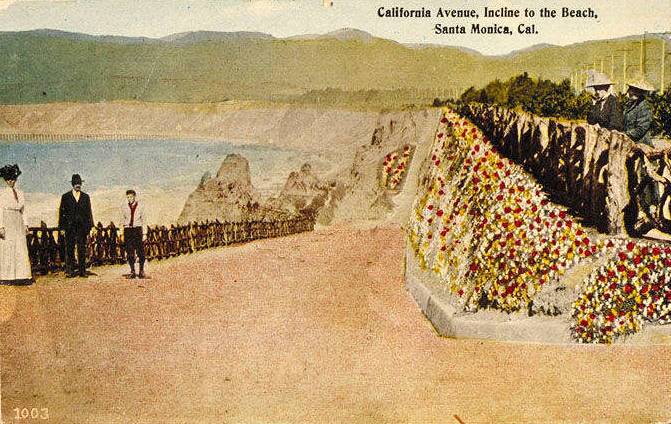When Model T’s Scaled Santa Monica’s California Incline

Functionally, it was little more than a highway ramp – a 1,400-foot-long, 3-lane roadway that climbed 84 feet between Pacific Coast Highway (PCH) and Santa Monica’s Ocean Avenue. But that description hardly hints at the charm of the original California Incline. Driving down, the palms of Palisades Park receded into the sky as one abruptly left behind the urban grid of Santa Monica and entered the surf and sand (and traffic) that is the realm of PCH.
Footpaths like the Sunset Trail and stairways like the 99 Steps preceded it, but the California Incline was the first automobile shortcut over Santa Monica’s ocean bluffs. When it opened around 1905, Linda Vista Drive (as it was then called) was a dirt path carved into the cliffside. Only later was it paved and named for its intersection with California Avenue. In 1935, construction of PCH along the base of the bluffs further reconfigured the California Incline, widening the roadway adding a concrete balustrade that remains its most notable architectural detail.
Erosion brought more change in the ensuing decades. In places where the sandstone beneath the ramp crumbled away, 14 concrete columns took its place, keeping the roadway’s 8-inch slab from falling onto PCH below. That engineering solution looked picturesque from below, but Caltrans and the city of Santa Monica deemed it unsafe. In 2014, the city began demolishing the old incline. In its place rose a new ramp, built to modern seismic standards and with more generous provisions for pedestrians and cyclists. It opened Sept. 1, 2016.







Editor’s note: This article originally appeared on Los Angeles Magazine’s City Think blog on April 22, 2014. It has been updated here and expanded with additional images.


